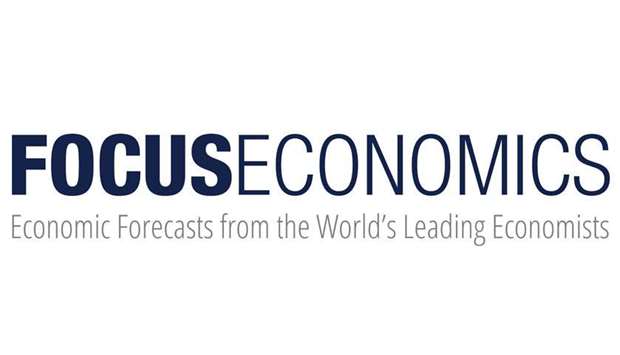Qatar’s public debt as a percentage of the country’s gross domestic product (GDP) will fall continuously over the next five years, from 52.9% this year to 44.5% in 2024, researcher FocusEconomics has said in a report.
The country’s public debt is estimated to fall to 50.3% (in 2020), 48.4% (in 2021), 47.6% (in 2022) and 46.1% (2023).
The country’s fiscal balance as a percentage of GDP is set to rise to 4.4% in 2024 from an estimated 1.7% this year.
Qatar’s merchandise trade balance will scale up further and exceed $63.9bn in 2024, the report said.
This year, FocusEconomics has projected the merchandise trade balance at nearly $42.9bn.
The current account balance (as a percentage of GDP) will be 5% in 2024 compared with 5.3% in 2019.
Qatar’s gross domestic product is expected to reach $241bn by 2024, it said. By the year-end, GDP may total $193bn.
Qatar’s economic growth in terms of nominal GDP will reach 4.8% in 2024 from 1% by the year-end.
International reserves may exceed $39bn in 2024, from the current $36.4bn; FocusEconomics estimated it will cover 10.8 months of country’s imports by then.
The country’s inflation, the report noted, will be 1.9% in 2024 and -0.4% this year.
Qatar’s unemployment rate (as a percentage of active population) will remain a meagre 0.2% in 2024, unchanged from this year.
According to FocusEconomics, Qatar’s economy will likely “gather momentum” next year due to a “stronger” energy sector as the Barzan gas facility comes online and investment into the expansion of the North Field gas project picks up.
Nevertheless, geopolitical tensions and volatile commodity prices remain downside risks to the outlook.
FocusEconomics panellists see growth of 2.5% in 2020, which is unchanged from last month’s forecast, and 2.6% in 2021.
Consumer prices fell 0.8% in annual terms in October, contrasting September’s marginal 0.1% uptick.
Inflation should accelerate next year, with the expected implementation of a 5% VAT and newly-agreed labour reforms in January 2020 providing upward pressures.
Moreover, “recent signs of a recovery in the housing market and an expected pickup in economic activity” should also “stoke prices” next year.
The researcher’s panellists expect average consumer prices to increase 1.9% in 2020, which is unchanged from last month’s forecast. In 2021, it sees inflation easing to 1.5%.
The country report also said the economy “shrunk” year-on-year in the second quarter, weighed on by an “unexpected contraction” in the non-mining and quarrying sector, and a “fall” in mining and quarrying output.
Turning to the third quarter, the economy should have “improved” but will have “remained subdued” nonetheless.
Qatar’s industrial production output strengthened in Q3, which “bodes well” for the hydrocarbon and manufacturing sectors, FocusEconomics said.
The value of merchandise exports, however, “tumbled” in Q3, due to lower prices for oil and gas compared to the same period last year, FocusEconomics noted.




